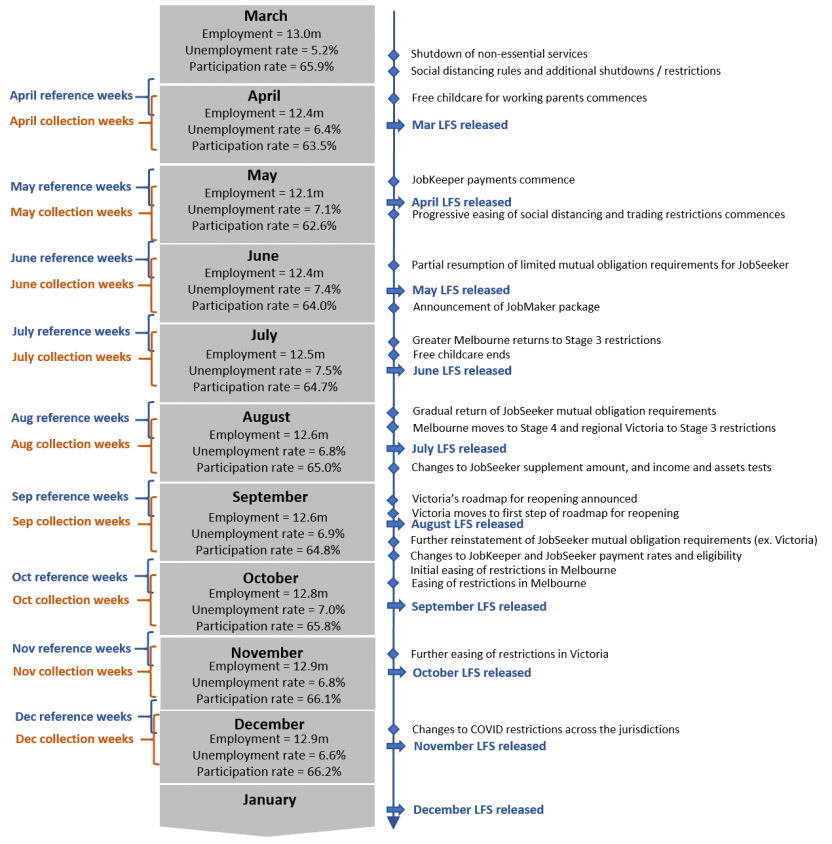Participation rate, Seasonally adjusted
[["Dec-10","Jan-11","Feb-11","Mar-11","Apr-11","May-11","Jun-11","Jul-11","Aug-11","Sep-11","Oct-11","Nov-11","Dec-11","Jan-12","Feb-12","Mar-12","Apr-12","May-12","Jun-12","Jul-12","Aug-12","Sep-12","Oct-12","Nov-12","Dec-12","Jan-13","Feb-13","Mar-13","Apr-13","May-13","Jun-13","Jul-13","Aug-13","Sep-13","Oct-13","Nov-13","Dec-13","Jan-14","Feb-14","Mar-14","Apr-14","May-14","Jun-14","Jul-14","Aug-14","Sep-14","Oct-14","Nov-14","Dec-14","Jan-15","Feb-15","Mar-15","Apr-15","May-15","Jun-15","Jul-15","Aug-15","Sep-15","Oct-15","Nov-15","Dec-15","Jan-16","Feb-16","Mar-16","Apr-16","May-16","Jun-16","Jul-16","Aug-16","Sep-16","Oct-16","Nov-16","Dec-16","Jan-17","Feb-17","Mar-17","Apr-17","May-17","Jun-17","Jul-17","Aug-17","Sep-17","Oct-17","Nov-17","Dec-17","Jan-18","Feb-18","Mar-18","Apr-18","May-18","Jun-18","Jul-18","Aug-18","Sep-18","Oct-18","Nov-18","Dec-18","Jan-19","Feb-19","Mar-19","Apr-19","May-19","Jun-19","Jul-19","Aug-19","Sep-19","Oct-19","Nov-19","Dec-19","Jan-20","Feb-20","Mar-20","Apr-20","May-20","Jun-20","Jul-20","Aug-20","Sep-20","Oct-20","Nov-20","Dec-20"],[[65.595647200000002],[65.767620199999996],[65.515486100000004],[65.603600299999997],[65.357618000000002],[65.256457900000001],[65.307098199999999],[65.370338899999993],[65.444119499999999],[65.516550899999999],[65.406431799999993],[65.3531567],[65.107434400000002],[65.320525799999999],[65.126301999999995],[65.342192299999994],[65.0577045],[65.348793599999993],[65.088018500000004],[65.057935000000001],[64.984825299999997],[65.3265289],[65.181865500000001],[64.946647999999996],[65.042042499999994],[65.293945600000001],[65.241382900000005],[65.081695499999995],[65.150420699999998],[65.028040399999995],[65.074961700000003],[64.864770399999998],[64.887956599999995],[64.848766900000001],[64.8349288],[64.620540700000006],[64.4566078],[64.579165200000006],[64.594474199999993],[64.747662099999999],[64.675831299999999],[64.5660922],[64.671069900000006],[64.764692499999995],[64.6214856],[64.6480794],[64.651303400000003],[64.538554500000004],[64.636258600000005],[64.753676400000003],[64.868783699999994],[64.861280699999995],[64.803931899999995],[64.851916200000005],[64.798765399999994],[65.082241400000001],[64.933503900000005],[64.972938299999996],[65.160480000000007],[65.228761899999995],[65.140290399999998],[65.244373499999995],[64.988425800000002],[64.940966399999994],[64.897591399999996],[64.860582600000001],[64.869811299999995],[64.947377099999997],[64.654048900000006],[64.485073600000007],[64.540990500000007],[64.712062700000004],[64.818354900000003],[64.690677800000003],[64.6984073],[64.905229599999998],[64.937320499999998],[64.959190699999994],[65.077168299999997],[65.154566500000001],[65.290520700000002],[65.317962399999999],[65.265543800000003],[65.504497799999996],[65.806040999999993],[65.785623099999995],[65.686625500000005],[65.590434200000004],[65.602195499999993],[65.436303199999998],[65.658371900000006],[65.508029500000006],[65.628442000000007],[65.416055200000002],[65.532956100000007],[65.674015800000006],[65.680019900000005],[65.731234099999995],[65.578451400000006],[65.700545199999993],[65.870607699999994],[66.0177944],[65.981314299999994],[66.019542099999995],[66.147687599999998],[66.068356899999998],[65.945419799999996],[65.923486999999994],[65.947770000000006],[66.050784100000001],[65.913774399999994],[65.884823499999996],[63.545292400000001],[62.630951199999998],[64.033560499999993],[64.654622000000003],[65.008178700000002],[64.833203800000007],[65.782541399999999],[66.099831100000003],[66.164405599999995]],[[72.550579400000004],[72.812461799999994],[72.536921399999997],[72.3507058],[72.167130599999993],[71.962665299999998],[71.890340699999996],[71.965513799999997],[72.138815100000002],[72.142284099999998],[72.078121100000004],[72.037290799999994],[71.815797700000005],[72.160408399999994],[71.813510600000001],[71.767761100000001],[71.698001599999998],[71.755414400000006],[71.581730399999998],[71.497411200000002],[71.569966300000004],[71.816017000000002],[71.754508599999994],[71.474286800000002],[71.722619300000005],[71.940080199999997],[71.706194999999994],[71.530124200000003],[71.500218599999997],[71.547567200000003],[71.597726899999998],[71.262077199999993],[71.289079000000001],[71.199515899999994],[71.205694800000003],[71.0291505],[70.908894700000005],[70.852392800000004],[70.759428],[70.926111000000006],[71.033839299999997],[70.6719157],[70.862146499999994],[70.992933500000007],[70.856279999999998],[70.720782099999994],[70.840748500000004],[71.075615400000004],[70.866666800000004],[71.100570700000006],[71.177492700000002],[71.287743199999994],[71.101032099999998],[71.010286199999996],[70.840211100000005],[71.023097399999997],[70.930634999999995],[70.933614300000002],[71.105834700000003],[70.936801200000005],[70.952207299999998],[71.313461000000004],[70.737019700000005],[70.7877668],[70.558614300000002],[70.610752700000006],[70.3529111],[70.568695899999994],[70.419192499999994],[70.063960499999993],[70.265969699999999],[70.3328408],[70.582820699999999],[70.206265299999998],[70.383718900000005],[70.4999763],[70.664070199999998],[70.564290700000001],[70.508721800000004],[70.7435045],[70.7555196],[70.729825099999999],[70.616452899999999],[70.919950299999996],[71.1697384],[71.229030800000004],[70.984957199999997],[70.846649799999994],[70.944575799999996],[70.687958800000004],[70.901257200000003],[70.884121199999996],[71.034164399999995],[70.7241578],[70.8491219],[71.036117000000004],[71.047636199999999],[70.996700300000001],[70.734125800000001],[70.993261099999998],[70.977706699999999],[71.465770199999994],[71.234624699999998],[71.212125499999999],[71.2957088],[71.132223600000003],[70.910207099999994],[70.914325000000005],[70.964609600000003],[70.794705100000002],[70.763658199999995],[70.782645000000002],[68.870793199999994],[67.930647199999996],[69.084724100000003],[69.610151700000003],[69.923212300000003],[69.716937400000006],[70.811630300000004],[71.011441199999993],[71.116776799999997]],[[58.836472499999999],[58.921694100000003],[58.692946900000003],[59.048214199999997],[58.7409502],[58.739519999999999],[58.909024100000003],[58.963002099999997],[58.941983200000003],[59.083278399999998],[58.927785700000001],[58.861702700000002],[58.591704700000001],[58.676816799999997],[58.630674499999998],[59.100484100000003],[58.606688200000001],[59.124079799999997],[58.777994499999998],[58.800347199999997],[58.5854061],[59.019801800000003],[58.794867500000002],[58.603895899999998],[58.551236400000001],[58.837417199999997],[58.961816200000001],[58.8188338],[58.983350100000003],[58.6961467],[58.739921099999997],[58.653158599999998],[58.674199999999999],[58.685464099999997],[58.655185400000001],[58.407124699999997],[58.203854900000003],[58.4994291],[58.619193199999998],[58.758821300000001],[58.513741500000002],[58.649152700000002],[58.672288700000003],[58.731011000000002],[58.582599299999998],[58.767268999999999],[58.658526700000003],[58.210355999999997],[58.606009100000001],[58.611441200000002],[58.764274],[58.643603200000001],[58.712346799999999],[58.895474399999998],[58.956303200000001],[59.338233500000001],[59.1362655],[59.212127799999998],[59.4159577],[59.7150046],[59.527627799999998],[59.383848899999997],[59.437792799999997],[59.295973500000002],[59.432835500000003],[59.310622899999998],[59.578463200000002],[59.523403500000001],[59.092109600000001],[59.103581699999999],[59.019023500000003],[59.291045099999998],[59.259199600000002],[59.371231199999997],[59.214958099999997],[59.5088157],[59.413596200000001],[59.552801000000002],[59.838184900000002],[59.764317800000001],[60.020470099999997],[60.099836000000003],[60.106628800000003],[60.283811900000003],[60.635680700000002],[60.537968900000003],[60.578393800000001],[60.522373600000002],[60.450676899999998],[60.371921299999997],[60.602073599999997],[60.323322599999997],[60.415191200000002],[60.297002399999997],[60.406539899999999],[60.503702400000002],[60.504800099999997],[60.654031699999997],[60.6066541],[60.596133799999997],[60.945393699999997],[60.764056500000002],[60.915492299999997],[61.012904300000002],[61.1846137],[61.187019200000002],[61.160009000000002],[61.113349499999998],[61.112984900000001],[61.479269100000003],[61.240407599999998],[61.165522899999999],[58.413916200000003],[57.524495000000002],[59.166589999999999],[59.879941700000003],[60.272651500000002],[60.127976500000003],[60.937183900000001],[61.367578399999999],[61.392798599999999]]]
[]
[{"axis_id":"0","tick_interval":"6","axis_min":"","axis_max":"","axis_title":"","precision":-1,"axis_units":"","tooltip_units":"","table_units":"","data_unit_prefix":"","data_unit_suffix":"","reverse_axis":false}][{"axis_id":"0","tick_interval":"5","axis_min":"55.0","axis_max":"75.0","axis_title":"%","precision":"1","table_units":"(%)","tooltip_units":"(%)","axis_units":"","data_unit_prefix":"","data_unit_suffix":"","reverse_axis":false},{"axis_id":"1","tick_interval":"","axis_min":"","axis_max":"","axis_title":"","precision":"","table_units":"(%)","tooltip_units":"(%)","axis_units":"","data_unit_prefix":"","data_unit_suffix":"","reverse_axis":false}]
